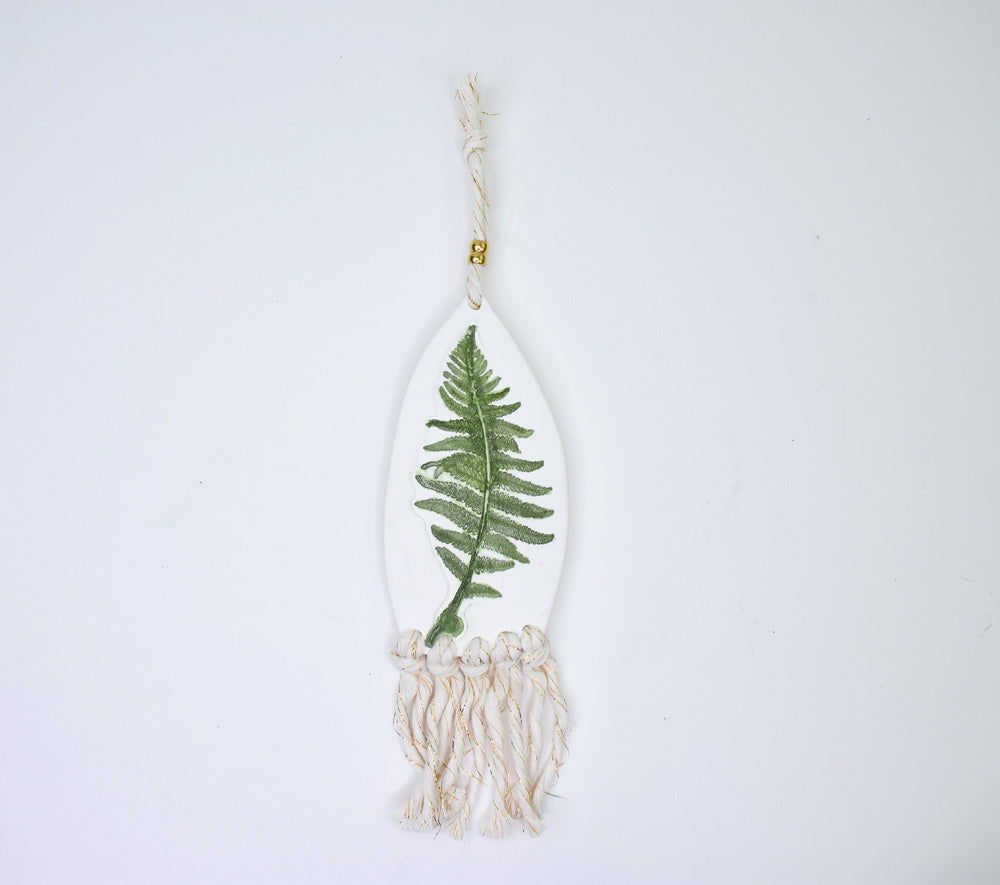Sculpey Air-Dry™ Botanical Wall Hanging
Sculpey Air-Dry™ Botanical Wall Hanging
Read More
Use your favorite botanical stamp to make up a cool wall hanging. The design is highlighted with watered down paint.
COMPLETION TIME:
30 Minutes plus drying time - recommended that you let the wall hanging dry overnight before finishing.
Designed by Amy Koranek
Read Less
ADDITIONAL SUPPLIES
- Large fern leaf stamp
- Zip tight bag for storing excess clay
- Water
- Dark green acrylic paint
- Fine line paintbrush
- Water
- Cup for mixing paint
- Metal pony beads (2) with 8mm holes
- Thick yarn
- Scissors
- Ruler
- Bobby pin

Project Instructions
Step 1
Step 2

Step 3

Step 4

Step 5

Step 6

Step 7

Step 8

Step 9

Step 10

Step 12

Step 12

Step 13

711-14

Step 15

Step 16


